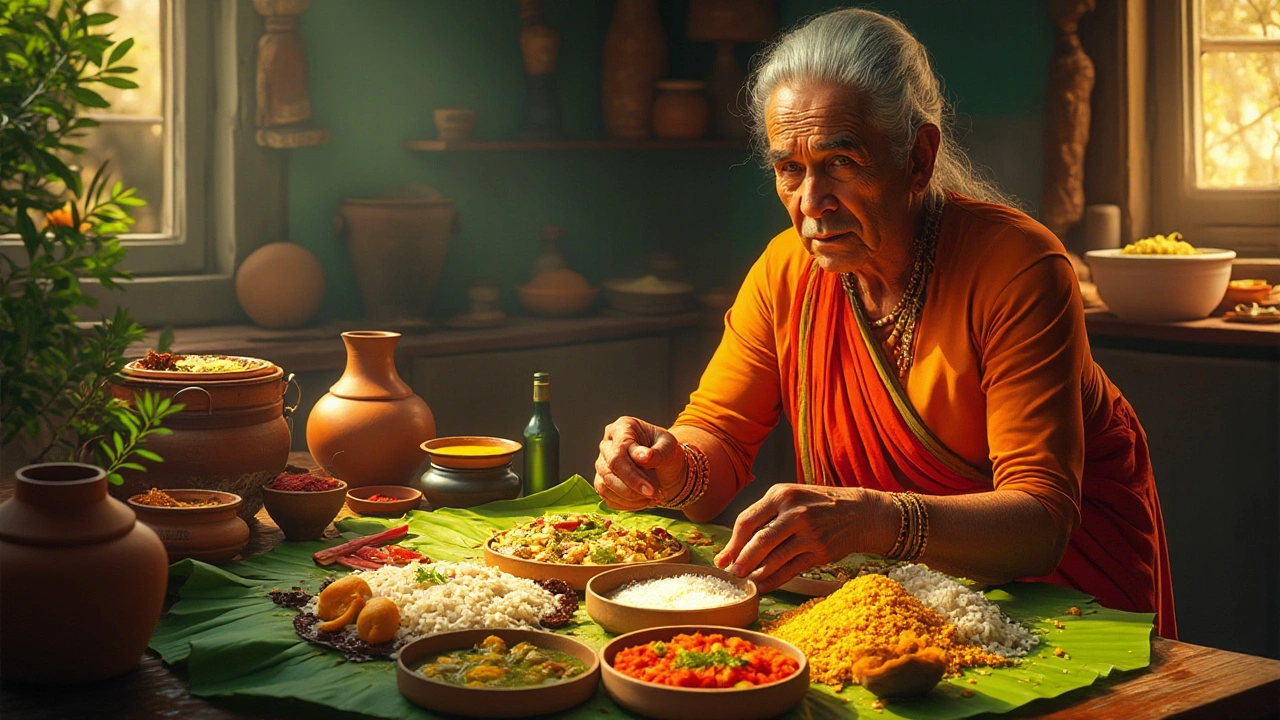Vegetarian Traditions in Indian Cooking
When working with vegetarian traditions, the centuries‑old practice of creating satisfying meals without meat, India leans on spices, legumes, and dairy to build depth. Also known as plant‑based culinary heritage, it blends regional customs, seasonal produce, and religious habits to shape a food culture that feeds millions daily. Below you’ll see how this backdrop connects the recipes we’ve gathered, from quick everyday dishes to festive specialties.
One pillar of these traditions is paneer, a fresh cheese that offers a neutral canvas for bold spices. Whether it’s tossed in a mustard‑seed tadka, layered in a biryani, or molded into kebabs, paneer supplies the protein many vegetarians rely on. Its texture holds up to grilling, frying, or simmering, making it a versatile star across North and Central Indian kitchens.
Another backbone is dal, the family of split pulses that range from red lentils to black urad. Dal provides both protein and fiber, and regional variations showcase how spices, tempering (tadka), and cooking methods turn a simple legume into a comfort bowl. From the buttery dal makhani of Punjab to the tangy rasam of South India, each version reflects local tastes while staying rooted in the same nutritional goal.
Condiments complete the picture, and chutney, a vibrant blend of herbs, fruits, nuts, or spices that can be sweet, sour, or fiery, is the classic sidekick. Chutney elevates a plain roti or a steaming bowl of khichdi, adding brightness and texture. Whether you grind fresh cilantro with green chilies or simmer tamarind with jaggery, the result is a flavor burst that bridges the main dish and the palate.
Of course, no discussion of Indian vegetarian cooking is complete without curry, the umbrella term for saucy preparations built on a base of onions, tomatoes, and spice blends. Curry ties together the protein sources—paneer, dal, or vegetables—and the condiments like chutney, creating layers of aroma and heat. The method of tempering spices in oil before adding the main ingredients is a hallmark that distinguishes a good curry from a flat broth.
How These Elements Shape Everyday Meals
Vegetarian traditions encompass the use of plant‑based proteins, the art of spice layering, and the balance of textures. They require an understanding of how heat and acid influence legumes, which is why soaking dal or adding lemon to biryani matters. They influence regional identities; for example, the South favors fermented rice batters for dosa while the West leans on wheat‑based breads like roti. Recognizing these patterns helps you adapt any recipe to your pantry, whether you’re swapping paneer for tofu or adjusting the chili level to suit your taste.
Each article in the collection below reflects a slice of this rich tapestry. You’ll find deep dives into why paneer beats tofu in certain dishes, the science behind adding lemon to biryani, tricks for getting fluffy rotis, and nutrition facts for dal varieties. The goal is to give you practical, step‑by‑step guidance that respects the traditions while letting you experiment confidently.
Ready to see how these vegetarian traditions play out in real recipes and tips? Scroll down to explore detailed guides, flavor hacks, and nutrition insights that will help you bring authentic Indian plant‑based dishes to your kitchen.

Indian Cultures with a Deep-rooted Vegetarian Tradition
India is home to one of the largest vegetarian populations in the world, deeply influenced by various cultural and religious beliefs. While Hinduism, Jainism, and Buddhism prominently advocate vegetarianism, each culture and region has its unique dietary practices and philosophies. Exploring the diverse tapestry of these vegetarian traditions unveils not only a wide array of flavorful dishes but also a profound spiritual connection to the practice. This journey through Indian vegetarianism provides insights into how these cultural beliefs shape daily life and cuisine.